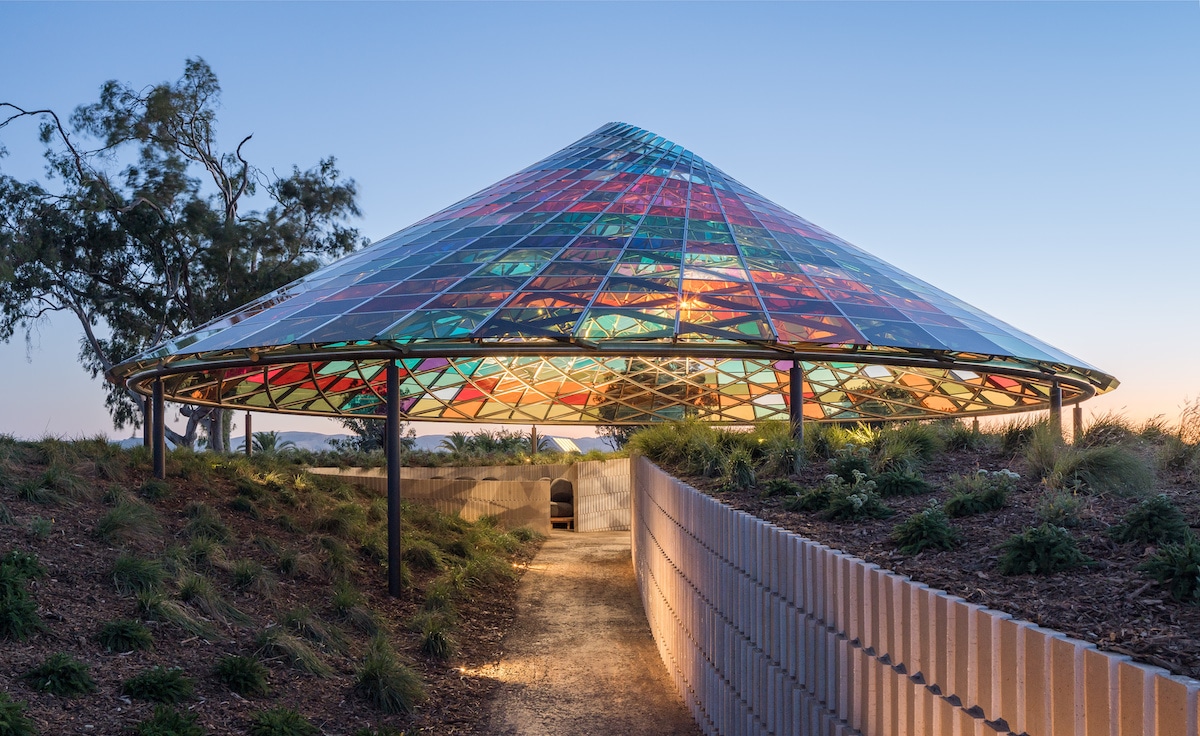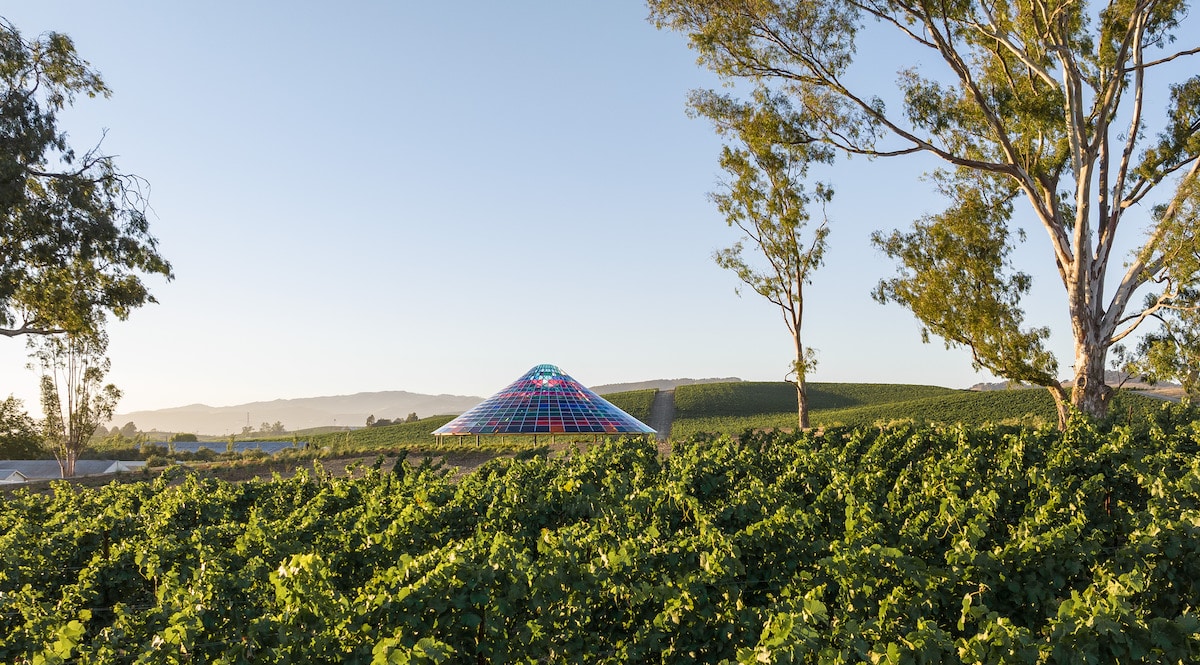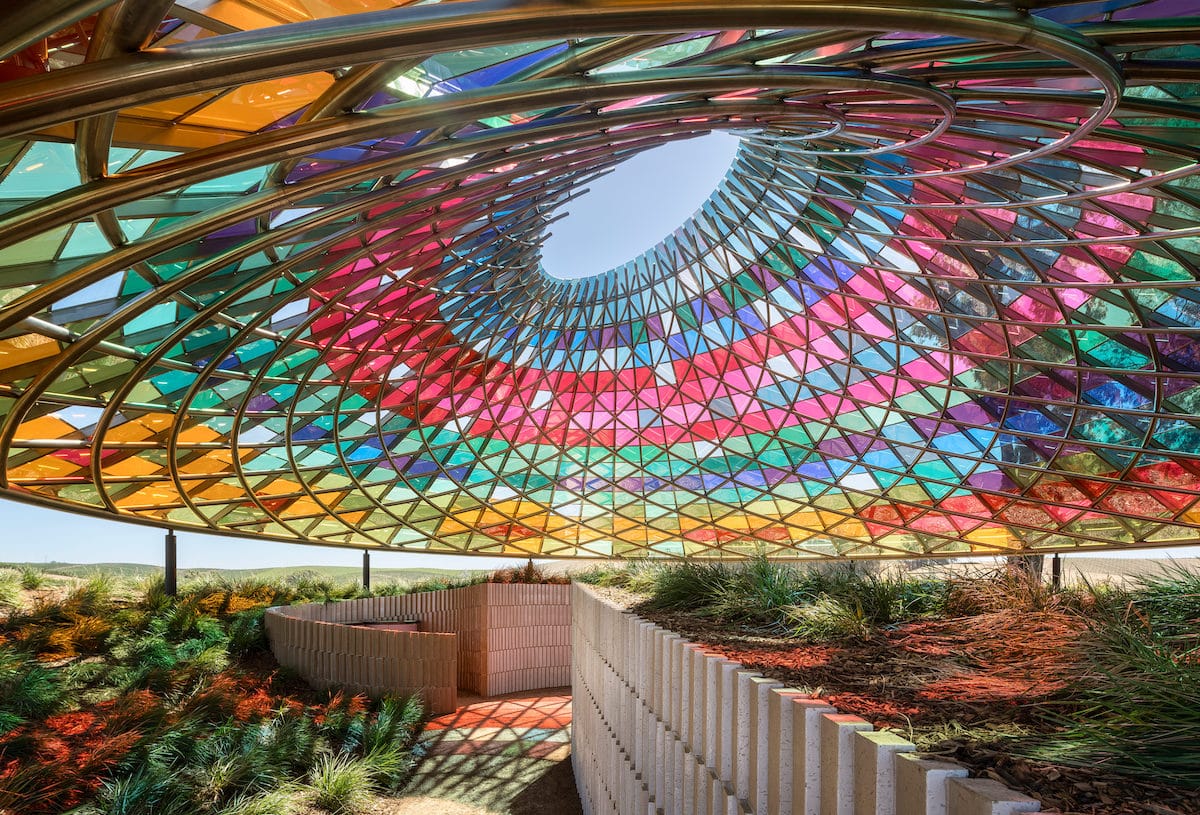
Nestled in the valley of a Sonoma winery, a colorful mosaic canopy provides a unique tasting space. Designed by Studio Other Spaces—founded in 2014 by artist Olafur Eliasson and architect Sebastian Behmann—the Vertical Panorama Pavilion brings an artistic touch to the grounds of The Donum Estate.
As one of California’s leading Pinot Noir producers, The Donum Estate wanted to create a new dedicated wine-tasting space. Led by project architect Benjamin Albrecht, Studio Other Spaces imagined a canopy based on the history of circular calendars. Comprised of 832 colorful glass pieces, the pavilion has a north-facing oculus in the center.
The glass tiles of the canopy represent an abstract calendar that depicts yearly averages of the area’s four meteorological parameters—solar radiance, wind intensity, temperature, and humidity. The 24 colors of the tiles were inspired by the colors of the Sonoma Valley and vary in their translucent and transparent hues.
With the Vertical Panorama Pavilion, the firm sought to provide an encounter between visitors’ senses and surroundings. “The design for the pavilion aims at creating a holistic experience that is based on a journey through several horizontal layers of the site, landscape, and surrounding elements–resulting in a type of vertical panorama,” writes the firm.
Thinking in layers, the architects wanted to ensure that guests could experience all the conditions that lead to making great wine. As they are led up a curved path toward the pavilion, the colorful roof begins to emerge. Continuing toward the pavilion, they see the walls rise and can take in the sights and sounds that comprise this unique environment. From chirping insects to rustling grass to the fragrance of the surrounding fauna, each element forms a new layer for the guest to enjoy.
“Vertical Panorama Pavilion is a hospitable space, which celebrates the exceptional wine at Donum and the microclimates that created it,” share Eliasson and Behmann. “The specific design elements are abstractions of components taken from a vertical slice through the pavilion’s location on the Estate. The pavilion maps out the surrounding ephemera—the soil, vegetation, wind, sun, atmosphere, and rain—and incorporates these into the colorful canopy, reflecting the wine’s unique signature.”
Studio Other Spaces, founded by Olafur Eliasson and Sebastian Behmann, has created the colorful Vertical Panorama Pavilion.

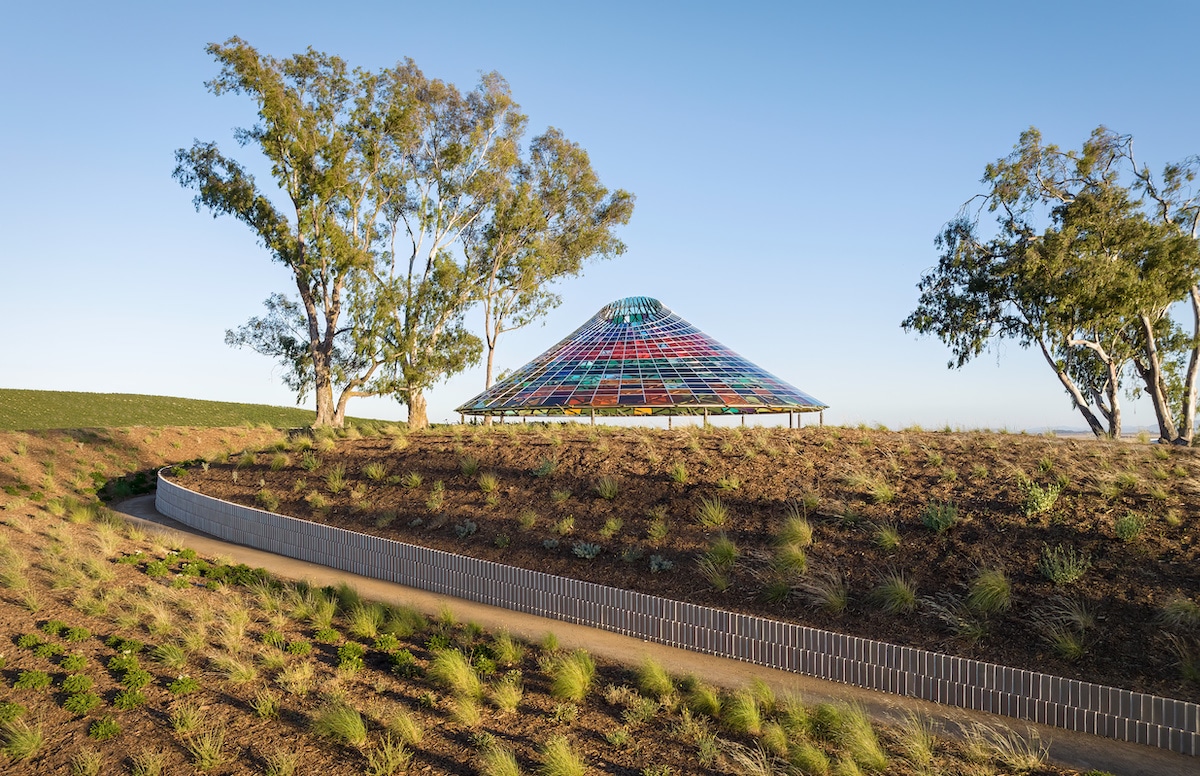
Located in Sonoma, California, the canopy’s roof is composed of 832 glass tiles.


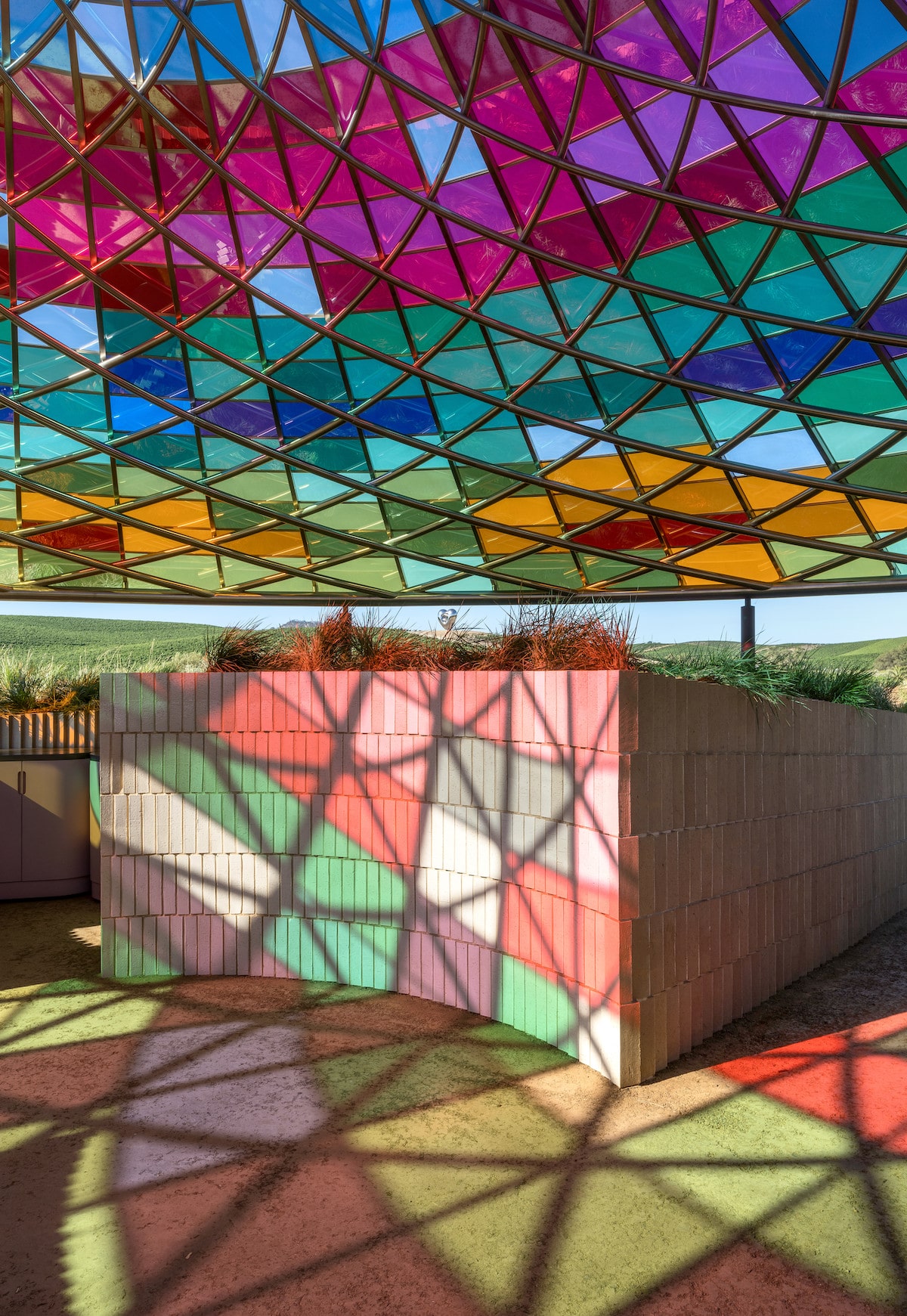
The pavilion, which is based on a circular calendar, acts as a tasting space for The Donum Estate.
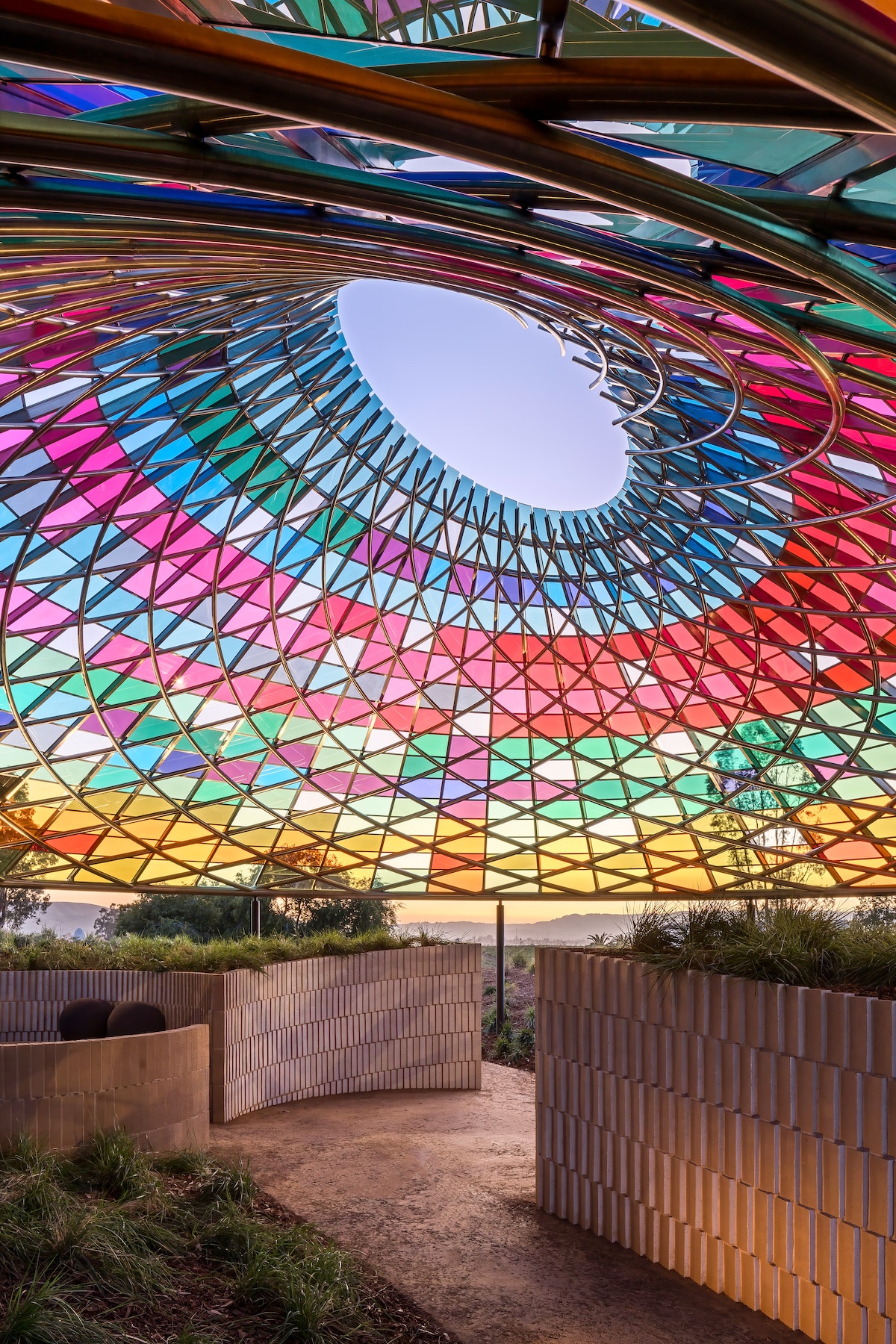
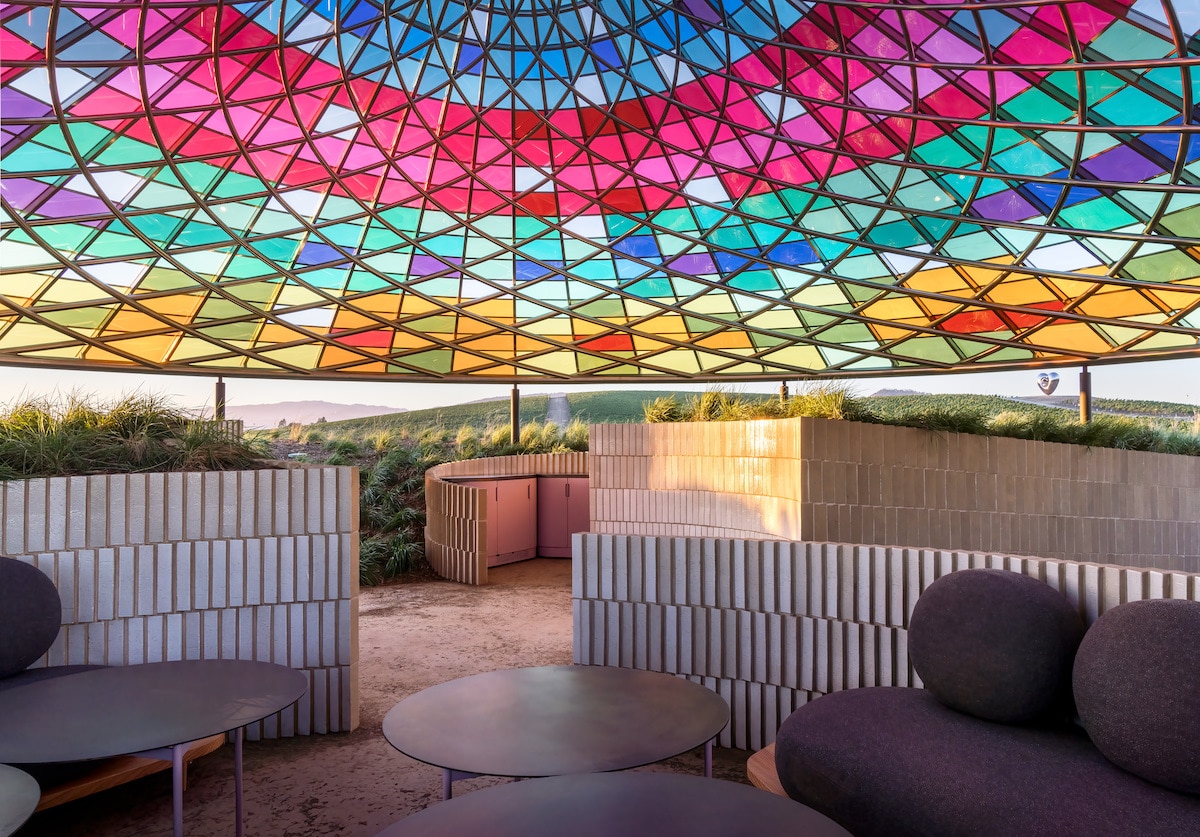

As a leading producer of California Pinot Noir, the vineyard has a collection of 50 works of site-specific sculpture and works of art.
